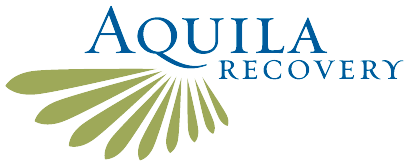 CBT, or cognitive behavioral therapy, is a common strategy that inpatient and outpatient rehabilitation programs utilize to assist people struggling with alcohol or substance addiction.
CBT, or cognitive behavioral therapy, is a common strategy that inpatient and outpatient rehabilitation programs utilize to assist people struggling with alcohol or substance addiction.
Many people assume that CBT is talk therapy — and while an individual will spend time speaking with a therapist, cognitive behavioral therapy includes a significant amount of functional training. Those who undergo CBT will learn new skills to set them up for success.
CBT works so consistently because it is more than just a concept; it can also change the brain. From defining new neural pathways to targeting specific areas of the brain and increasing their control, CBT can revitalize the way a person approaches their addictive behaviors.
Here is a brief primer on the science behind how CBT works in recovery.
The Changing Shape of the Brain
The brain is not a static organ; rather, it is highly adaptable to its environment. This adaptability is called neuroplasticity, and it describes how the brain may take on physical changes according to which areas are used most frequently and in which manner. These changes can be so significant that they are even visible on MRIs.
When an individual is faced with the challenge of addiction, undergoing CBT can target areas of the brain that are not being utilized to their full potential. The most common brain regions that see increased activity through cognitive behavioral therapy are:
The limbic system
The limbic system is responsible for a person’s ability to regulate emotions. In addition, people often struggle with strong cravings, feelings of helplessness, or even physical discomforts that compel them to use.
Cognitive behavioral therapy helps patients to become aware of the full pipeline of the limbic system from the moment they feel an emotion through its journey into action. People can retrain the limbic system to break the connection between emotion and reliance on a substance by mapping how thoughts and feelings lead to behaviors.
The prefrontal cortex
The prefrontal cortex is in charge of making decisions and controlling a person’s instinctual responses. CBT provides training on managing cravings and finding alternative ways of coping with stress and other use triggers.
Just as muscles grow when used often, this repeated practice encourages growth in the prefrontal cortex, allowing the individual to exert greater control over their cravings and behaviors.
The amygdala
In people with a history of substance use, the amygdala can become overactivated — that is, it more aggressively contributes to a heightened emotional state that can drive people to use.
By strengthening the influence of the prefrontal cortex and mapping the cravings associated with the amygdala in CBT, patients can reverse the roles of these brain areas, achieving greater control.
Understanding the Neural Pathways
In addition to the many areas of the brain that influence decisions, the neurons and neurotransmitters sending signals through the brain also play a role in addiction.
Neural pathways are the roads inside the brain through which neurotransmitters travel. These roads are built over time. Just as a person walking the same path through the grass will eventually wear a pathway into the turf, repeatedly activating the same behaviors creates more established neural pathways.
Cognitive behavioral therapy can remap the neural pathways in the brain through practice and intention. This remapping allows important neurotransmitters to reach their intended destination with a greater success rate, and it can even increase the number of neurotransmitters the brain produces. These important neurotransmitters include:
 Dopamine – The neurotransmitter in charge of providing motivation, allowing a person to overcome cravings and maintain sobriety. However, too much dopamine can lead to impulsive decision-making.
Dopamine – The neurotransmitter in charge of providing motivation, allowing a person to overcome cravings and maintain sobriety. However, too much dopamine can lead to impulsive decision-making.- Serotonin – The regulator of mood and cravings (e.g., for sex, food, and, in this case, substances).
- Acetylcholine – The neuron that links the brain’s movement signals with the muscles. It plays a role in arousal, including how a body may become enticed to use substances.
- Gamma-Aminobutyric Acid (GABA) – GABA regulates the sympathetic nervous system. When levels are not consistent, people may experience more manic tendencies, such as impulses that are not in their best interests.
- Norepinephrine – The neurotransmitter associated with executive functioning, such as making decisions or thinking critically about an action before doing it.
Try CBT for Addiction Recovery
Achieving sobriety after substance addiction can be a challenging process, but many patients see great success with cognitive behavioral therapy. CBT actively changes the way the brain functions, which can create a self-fulfilling cycle of success.
The experts at Aquila Recovery Clinic always welcome those struggling with substance use to try cognitive behavioral therapy as part of an inpatient or outpatient program. Contact Aquila Recovery Clinic to sign up for cognitive behavioral therapy and take charge of your brain’s neural pathways.
